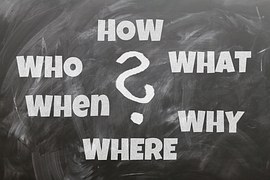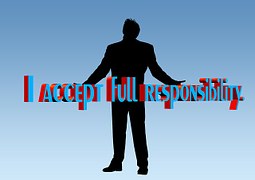How to read Job Descriptions- Hint: Focus on the Requirements.
As a leading executive recruiter, Key Corporate Services recognizes the importance of fully understanding the specific job description of a position before submitting resumes for consideration. Likewise, we advise any candidate to do the same. Examine the description carefully. Doing so will minimize the frustration brought on by indiscriminately applying to many jobs.
Unless you know how to read a job description and recognize which ones represent a strong match to your experience, applying to any job will likely be an exercise in futility. All your “sent” resumes will funnel into a “black hole” and you will never get a phone call from an interested employer.
 Each job description includes several components. These include:
Each job description includes several components. These include:
- A brief summary of the job duties/responsibilities
- Preferred qualifications
- Requirements of the position
- Information about the company
Reading each component closely is crucial. Doing so will help you decide whether you should even apply. Reading carefully to understand the intent of the “message” reminds me of a saying attributed to the late Pete Singer. This American Folk singer of the 40’s and 50’s made this comment about reading:
“Education is when you read the fine print. Experience is what you get if you don’t.”
It is a fact that there is a causal relationship between the way an applicant reads and interprets a job posting, the resulting perception they have of their qualifications, and their subsequent success in getting the interview. An article by TheSavvyIntern entitled Between the Lines: This is How to Read a Job Description discussed these relationships and the best way to read job descriptions.
A careful reading of a job description will not only tell you whether you are a good fit for the position, but also how best customize your resume to improve your chances of getting noticed and invited to an interview.
Before thinking “I am perfect for that job,” read the description closely.
It is only natural to read job descriptions looking for matches to your experience. When those matches are found, you MAY feel the job is right for you. But, instead of only looking for matches to your experience and qualifications, you must first understand what the company is really seeking. Otherwise, you will be surprised when you don’t get chosen for an interview
“How should I read a job description,” you ask?
First, recognize that job descriptions are usually not written by hiring managers. Instead, someone in the Human Resources department composes them. Using a template for open positions, the description is crafted using standard language applied to all the company’s open positions. In short, much of the description is FLUFF. Verbiage describing the company culture, the kind of people the company likes to hire (self-starters, strong communicators, people that work hard and play hard, strong written communication skills, etc.) is commonly copied into all job descriptions.
 While this information is nice to know, it is not what the hiring manager is really looking for. And, most importantly, it virtually NEVER consists of the key words/phrases searched by the software the HR department uses when screening resumes of candidates for the position.
While this information is nice to know, it is not what the hiring manager is really looking for. And, most importantly, it virtually NEVER consists of the key words/phrases searched by the software the HR department uses when screening resumes of candidates for the position.
Much of this fluff appears in the first part of the description. As such, it is not unusual for a job seeker to read that first part of the description and believe the job is a great fit for them; they have those skills and traits! They may even customize their resume when applying to emphasize those keywords and attributes. Unfortunately, that fluff has no bearing on their overall fit for the specific position.
Proof that this is only fluff can often be found by looking at multiple job postings from that company in various roles. You’re likely to find that each of those job descriptions has identical or similar wording. These generic “keywords” are generally the fluff you should ignore.
JOB DUTIES- don’t sweat the small stuff!
As mentioned, a job description has several components. One is a listing of Job Duties. While this is necessary information to understand the basics of the job, don’t dwell on these. The reality is, these listed job duties are created once and then posted the same way anytime that job description is posted.
Job duties are rarely updated. And, they often are very different from the actual expectations of the job. Remember, the duties are probably crafted by someone working in the HR department and not by someone who actually worked in that position. Over time, those duties probably have changed considerably and may now bear little resemblance to actual job functions of the position.
Job duties are often written in broad and general terms. The results leave a listing of duties that are vague and difficult to understand. You may wonder what the tasks are and how you will be judged.
JOB RESPONSIBILITIES– they are somewhat more important
Unlike the job duties, the job responsibilities listed in the description are important reference points to consider. They may contain more specific duties related to the job. An example, for a supervisor role, might be a specific responsibility to complete all interviewing and hiring practices for new employees.
 Regardless, job duties and job responsibilities should not be your determining factor of whether a particular position is a great fit or not.
Regardless, job duties and job responsibilities should not be your determining factor of whether a particular position is a great fit or not.
So, “what should I really focus on when reading a job description,” you may ask?
THE REQUIREMENTS SECTION IS YOUR PRIMARY FOCUS POINT!
This is the one section of a job description often written by the hiring manager. He/she will craft the distinctly critical aspects of the position they want in the job description. This will appear under the REQUIREMENTS section of the description.
This is the section that any applicant must read carefully. They give the most relevant insight to the role …and exactly what they are looking for from you. It’s not unusual for a hiring manager to take the time to write a fully detailed description of an entire position. At the very least, they will communicate the 3 or 4 requirements they want to see from top candidates.
Not only is the requirements section the most important part of the job description; the first few items listed are the most important requirements. Knowing this, the applicant should craft their resume to reflect the skills and experience in those first few requirements, in the exact order presented in order to noticed and considered for the role.
Employers will explain the qualifications that are both required and preferred. If the position requires a specialized educational degree, such as a bachelor’s degree, employers will always detail this requirement.
Similarly, employers will mention qualifications that are preferred but not necessarily required, such as the ability to speak Spanish or 10 years of experience in the field. As an applicant, you MUST match and detail your match to the required qualifications, but not be deterred from applying because of a possible lack of preferred qualifications.
If you meet the required qualifications and possess the skills, abilities or traits mentioned in the job description, forge ahead with confidence and apply for the position.
Realize that the required skills are often non-negotiable; there is some degree of flexibility with the preferred qualifications. Note: If you have qualifications that are similar to those listed under the preferred qualifications, be sure to note these in your application materials.
In summary, when reviewing job descriptions, concentrate on the things that are most highly valued by the employer. Realize that, while you may have great experience in many of the requirements further down the list, they are far less likely to have an impact when they are considering all the resumes to select whom to interview!
As Pete Seeger would say, “read the fine print.” Be smart about how to best present yourself by concentrating on the things that will be most highly valued!
